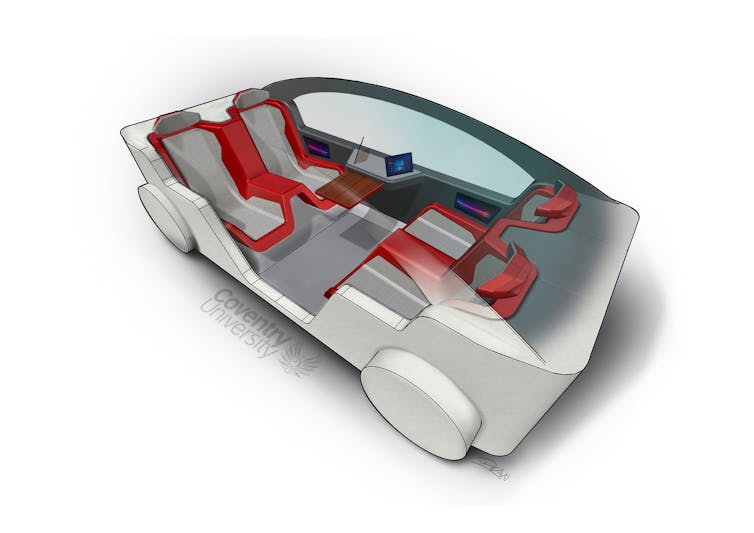The move towards driverless cars isn’t just a chance for people to relax at the wheel. It’s an opportunity to revolutionise personal transport in a way that offers life-changing benefits to people with disabilities.
But for this to happen, we need the car industry to commit to more inclusive design practices that right now are widely absent, and overcome the challenges of designing new ways to interact with autonomous vehicles. The solution could involve manufacturers drawing inspiration from diverse areas of product design to get the balance right between style and real-world user-friendliness.
The term “inclusive design” is used to describe the consideration of the needs and abilities of a diverse range of people in the design process. The car industry has traditionally focused on designing for people with driving licences – who by definition tend to be the more able-bodied section of the population.
Yet people with disabilities make up a significant minority – 22% of people in the UK (13.9 million) as of 2016-17. Many of these people may be unable to drive today’s cars, whether due to issues such as sight loss, significant physical impairments or cognitive issues.
Having a disability and being reliant on public transport is fraught with difficulties. And having trouble getting around is key among the barriers disabled people cite as stopping them taking greater part in society, whether visiting friends and family or joining a club.
Anyone who has had to have a difficult conversation with an older relative, encouraging them to give up driving often because of cognitive or physical decline, will understand what this can mean. So making transport more accessible is key to enabling people to improve their quality of life – whether through better economic opportunities, less social isolation or restoring dignity.
While autonomous cars will increasingly take away the need for people to physically drive the vehicles, there are other barriers to disabled people using cars that need to be considered. Simply getting in and out of vehicles presents difficulties to many people with physical disabilities – not just wheelchair users – and to many older people as muscle strength decreases with age. This makes thoughtful design touches such as grab handles and side steps widely beneficial.

Coventry University, Author provided
Operating features that require significant effort, such as folding car seats or tailgates, can be difficult so it’s essential they are designed to work with a reasonable level of force using handles and large contact surfaces. Seat belts also present difficulties as they can be difficult to reach and insert. Restraint systems need a fresh look and a redesign using inclusive design principles to ensure they can be easily used by all in the population.
And for those who are wheelchair users, a simple, easy-to-use restraint system is also required. That’s assuming there’s a well-designed ramp, lowered floor and appropriate space for the wheelchair user to first enter the vehicle.
Self-driving cars will also introduce new challenges, such as the need for interfaces to enable passengers to select a destination or receive information about their journey. To cater for disabled people, they can’t be reliant on only one type of input or feedback. Visual displays may not be suitable for some passengers, just as voice input may be inappropriate for others.
Yet, despite the considerable discussion and resources going into changing personal transport through the development of self-driving cars, there’s little evidence that inclusive design is a major part of the process. This includes from regulators, who are updating their codes to accommodate trials of autonomous vehicles, but apparently without considering how vehicle design could benefit people with disabilities.
Including inclusive design
It’s not difficult to design accessible cars if the needs and capabilities of a diverse population are considered early in the design process. A few car makers have adopted this philosophy, for example, Ford uses a “third age suit” that simulates the limited mobility, vision and sense of touch that many older people experience.
This helps the firm’s engineers and designers to get those important details right, such as their 360-degree door handles that allow the door to be easily opened from the outside using the the whole arm and hand, rather than pull-up handles that require the fingers and wrist to operate them.
Similarly, firms in other sectors have already found ways to develop accessible interfaces. Samsung’s work in producing smart TVs accessible for blind and partially sighted people received the Royal National Institute of Blind People’s Inclusive Society Award. The TV can read on-screen text back to the user and provides verbal feedback about the channel, volume and programme information. It even reads aloud the on-screen programme guide.
The car industry has a choice to make: business class travel for a select few, or truly accessible transport for the wider population, offering dignity and an enhanced quality of life to those who face significant challenges everyday. I know which I prefer.














